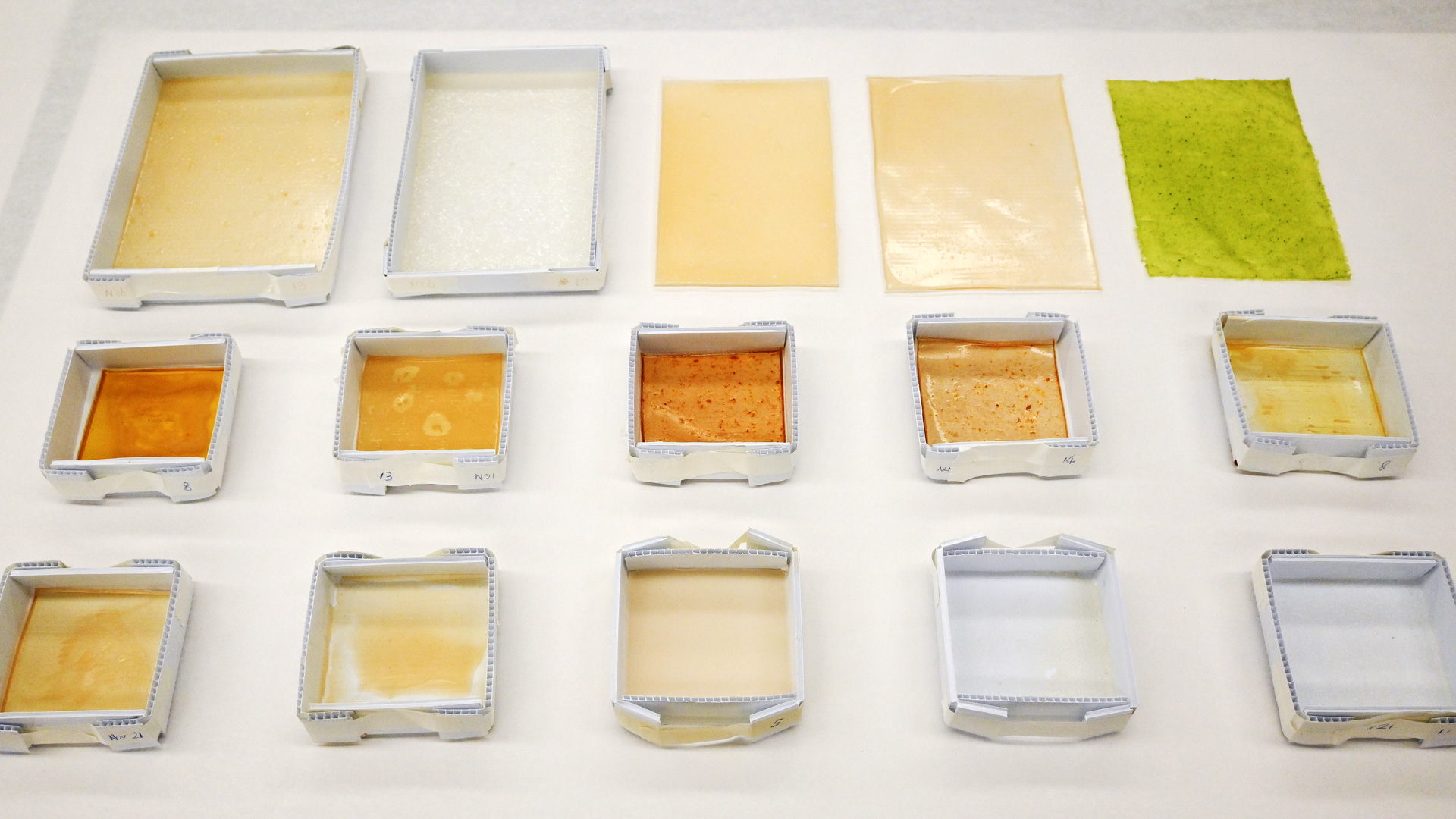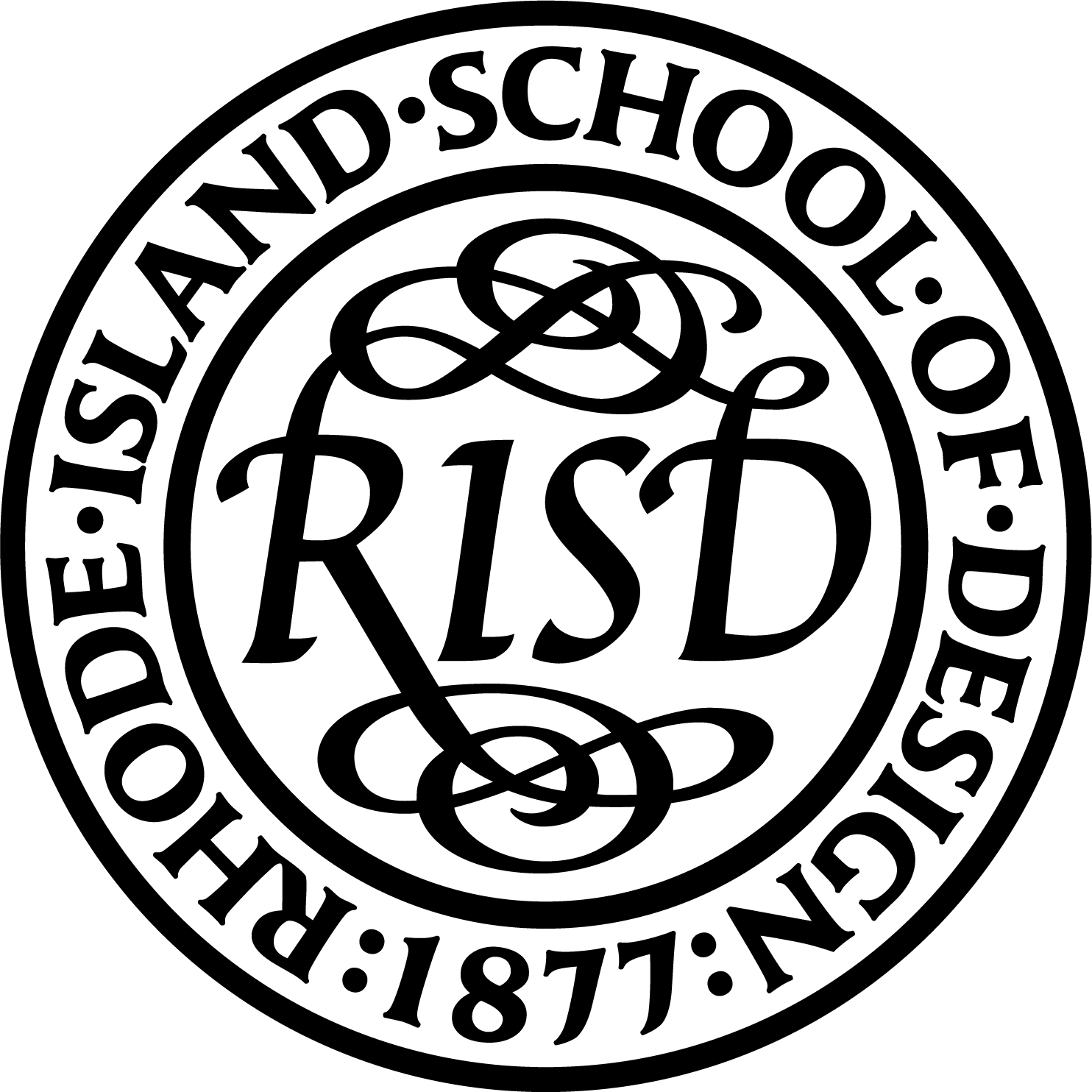Biodegradable Bio-silicone




︎ Creator:
Chien Lu
︎ Supervisors: Jennifer Bissonnette & Peter Yeadon
Silicone is being used to replace other polymers in some products and applications; but even though it is more environmentally friendly than plastic, it is still non-biodegradable. Often, instead of being properly recycled, silicone winds up in our landfills, where it may be harmful to the environment.
To turn silicone into a more sustainable material, Chien Lu experimented with potato starch, arrowroot starch, agar, salt, glycerin, Yuzu sauce, maple syrup, orange peel, and vinegar to create a bio-silicone alternative. She adjusted the ratio of different ingredients to test out different kinds of textures and material properties for future applications, while mainly focusing on exploring a few material attributes: stiffness, elasticity, and electrical conductivity.
In her final design, she combined all of these characteristics to create a conductive, inflatable material that could be used in everyday products and/or unusual devices, such as expandable controllers or other kinds of fluid interfaces. The final recipe for her bio-silicone is: water (70 ml), glycerin (20 g), gelatin (20 g), salt (5 g), and agar (2 g).
To demonstrate the potential of her work, Chien Lu used her bio-silicone to form keys for a customizable keyboard instrument that she designed. Every piece of bio-silicone is a key that plays a distinct sound. The keyboard can be customized into different shapes, for example: animals, fruit, abstract forms, or lightweight ribbons that could be taped on a variety of surfaces. In a different configuration, the keyboard could also be used to play games or feature other outputs.
︎ Supervisors: Jennifer Bissonnette & Peter Yeadon
Silicone is being used to replace other polymers in some products and applications; but even though it is more environmentally friendly than plastic, it is still non-biodegradable. Often, instead of being properly recycled, silicone winds up in our landfills, where it may be harmful to the environment.
To turn silicone into a more sustainable material, Chien Lu experimented with potato starch, arrowroot starch, agar, salt, glycerin, Yuzu sauce, maple syrup, orange peel, and vinegar to create a bio-silicone alternative. She adjusted the ratio of different ingredients to test out different kinds of textures and material properties for future applications, while mainly focusing on exploring a few material attributes: stiffness, elasticity, and electrical conductivity.
In her final design, she combined all of these characteristics to create a conductive, inflatable material that could be used in everyday products and/or unusual devices, such as expandable controllers or other kinds of fluid interfaces. The final recipe for her bio-silicone is: water (70 ml), glycerin (20 g), gelatin (20 g), salt (5 g), and agar (2 g).
To demonstrate the potential of her work, Chien Lu used her bio-silicone to form keys for a customizable keyboard instrument that she designed. Every piece of bio-silicone is a key that plays a distinct sound. The keyboard can be customized into different shapes, for example: animals, fruit, abstract forms, or lightweight ribbons that could be taped on a variety of surfaces. In a different configuration, the keyboard could also be used to play games or feature other outputs.
